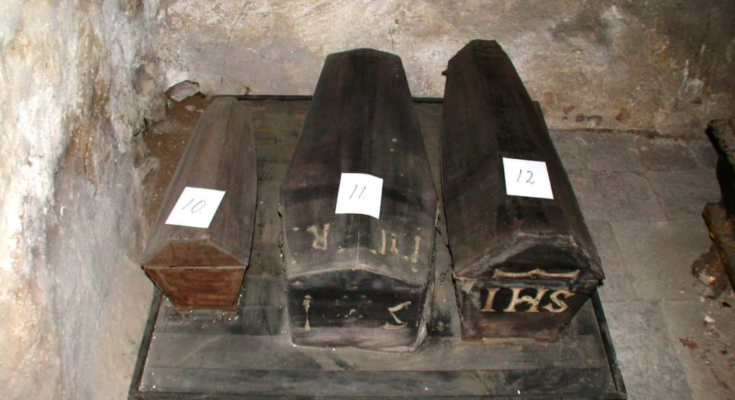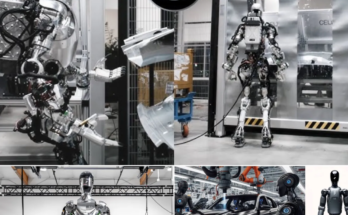Archaeologists Have Found Cases Of Coffin Birth In Excavated Tombs
When excavating an ancient tomb, the last thing most archaeologists would expect to find is the skeleton of a fetus half-protruding from its mother. There have been several cases where archeologists discovered just that, but fortunately, those discoveries are helping us better understand this macabre phenomenon.
In 2017, scientists announced the discovery of a coffin birth that dated all way the back to the 1300s. The grave was found near the modern city of Genoa, Italy. A mother was buried alongside her children, including an infant that is believed to have been a coffin birth. The mother and her children were likely victims of the bubonic plague, as sampling of their DNA found trace amounts of the disease in their systems.
here Are Extensive Historical Records Documenting Coffin Births
If you go back a couple hundred years in medical records, you’ll find quite a few accounts of documented coffin births. One 17th century text has the following quote about a woman found to have delivered after her life ended: “April ye 20, 1650, was buried Emme, the wife of Thomas Toplace, who was found delivered of a child after she had lain two hours in the grave.”
Another report from the same century described a woman who had a baby “hanging between the thighs” three days after she perished. These are just a few of the numerous cases on record.
The Phenomenon Is Known In The Scientific Community As Postmortem Fetal Extrusion
While “coffin birth” certainly has more of a morbid ring to it, the term is a bit too grim for scientists to use. The official phrase to describe coffin birth is postmortem fetal extrusion (PFE) or expulsion, and the two terms can be used interchangeably.
The scientific phrasing is much more accurate than the term “coffin birth,” as this phenomenon can happen to any deceased pregnant women, regardless of whether or not they are actually in a coffin.
PFE Isn’t Just An Ancient Phenomenon
While modern preservation techniques practically eliminate the chances of a coffin birth, not every corpse gets the treatment it needs. One report describes a pregnant woman who was found several weeks after she passed, and the description of PFE is considered one of the most graphic depictions.
The woman was bloated, green, and had a half-born fetus protruded from her body. Both the woman and fetus were confirmed to have passed when the mother did, and there were no signs of labor prior. The autopsy confirmed that the fetus had been forced by the gasses building up in the mother.
A Buildup Of Gasses During Putrefaction Is The Likely Cause Of Coffin Birth
The science behind PFE is as messy as the result, but researchers believe they’ve figured out why this happens. It has everything to do with putrefaction, which is what happens to your body after you expire. As your cells begin to decay, they start releasing large amounts of gasses as a waste product. The gasses can start to build up to the point that they need to find an escape route, which can often cause the body to burst.
This process could be the explanation for coffin birth, as the excess of gases can theoretically push the baby out as they look for a way to relieve the pressure.
The Fetuses Don’t Always Make It All The Way Out
One of the grisly details about coffin birth is that it’s rarely a full-on birth. Many of the fetuses are found only partially extruding from the mother’s birth canal. Sometimes it’s just the head, while other times the entire top half of the fetus is exposed.
Since it’s not an actual birth and only caused by pressurized gasses, the whole fetus doesn’t have to be released. There just has to be enough room to allow the gasses to escape the body cavity.
Coffin Birth Is An Incredibly Rare Occurrence
The one good thing about coffin birth is it’s incre dibly rare. There are very few accounts of coffin birth in the archaeological record, but it does happen from time to time. Coffin birth is so rare that there is an ongoing debate as to whether or not it’s a real phenomenon.
However, there is significant evidence that coffin births can still happen even in modern times.
Modern Preservation Techniques Have Practically Eliminated Coffin Births
There are so many reasons to be thankful for modern medical science, and this is definitely one of them. Coffin birth is nearly impossiple thanks to the help of morticians. When a person expires, the body undergoes a variety of procedures that help prepare it for burial.
This includes the flushing and removal of various fluids and microorganisms that are responsible for rapid putrefaction. Without these noxious chemicals, the body doesn’t go through the same process that enables the buildup of gasses.
There Have Been Cases Of Clinically Vegetative Mothers Giving Birth To Healthy Children
Even on the verge of losing one’s life, there is still hope for some pregnancies. One woman became the focus of a media storm after she successfully gave birth to twins in February 2017, after being diagnosed as in a clinically vegetative state 123 days prior. The Brazilian mother had suffered a debilitating stroke four months before the birth of her twins.
The babies, a boy and a girl, were born completely healthy. The birth was considered a miracle by many, and it goes to show that the dark end is not always certain for even the most complicated of pregnancies.
According To Historical Sources, Coffin Birth Happens Shortly After Expiration
You might think that coffin birth happens a long time after life has ended, but that’s not the case. Your body starts to decompose much quicker than most people might imagine, and that means that coffin births happen sooner rather than later. Most cases in the historical record state that coffin birth can occur within a few days, and some extreme reports say it can happen just hours after expiration.
One case describes a woman who passed at 5 PM and experienced PFE at 3 AM that same night.
It’s Rather Difficult To Confirm A Case Of Coffin Birth
Bad science is everywhere, so researchers need to be very careful before they announce something as rare as a coffin birth. Finding a fetal skeleton in a casket with a mother is not enough to confirm a coffin birth, as it could be that the fetus was intentionally placed in the coffin alongside the mother.
Scientists need to make note of the position of the fetus as well as confirm the fetus is of prenatal age and not just a normal infant. If the head of the fetus is facing in the opposite direction of the mother, that’s a good sign that it’s a genuine coffin birth.
Deceased Mothers And Infants Are Often Buried Together
Throughout history, childbirth has been an extremely dangerous endeavor for many women. Sometimes the mother doesn’t survive, other times the infant is terminated, and in the most horrible cases, both the mother and child pass. When a tragedy like this happens, it has been tradition for the mother and child to be buried together. Excavated tombs have found evidence of this practice being commonplace for hundreds of years.
More recent examples show that this is still the case as well.








